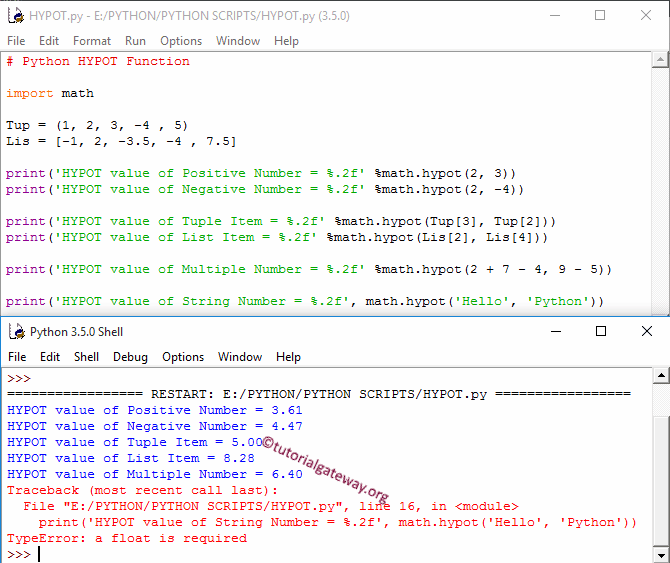The Python hypot function returns the square root of the sum of squares of the specified arguments. In this section, we discuss how to use the hypot function with an example.
The syntax of the math hypot in this Python programming language is
math.hypot(Value1, Value2, ...ValueN);
- If the value argument is a positive integer and a Negative integer, it returns the Output.
- If it is not a number, it returns TypeError.
Python hypot Function Example
The Python hypot function finds the square root of the sum of squares of a given number. In this example, we will find the sum of squares of the square root of different data types and display the output.
First, we used it directly on both Positive integers and negative integers. The following Python statements find the square root of the sum of squares of the corresponding values.
Next, We used the hypot Function on Tuple and List items. As you see from the below image, it is working perfectly on them. Next, we used the math function on multiple values.
Within the last statement, we tried on the String value, and it returns TypeError.
import math
Tup = (1, 2, 3, -4 , 5)
Lis = [-1, 2, -3.5, -4 , 7.5]
print('HYPOT value of Positive Number = %.2f' %math.hypot(2, 3))
print('HYPOT value of Negative Number = %.2f' %math.hypot(2, -4))
print('HYPOT value of Tuple Item = %.2f' %math.hypot(Tup[3], Tup[2]))
print('HYPOT value of List Item = %.2f' %math.hypot(Lis[2], Lis[4]))
print('HYPOT value of Multiple Number = %.2f' %math.hypot(2 + 7 - 4, 9 - 5))
print('HYPOT value of String Number = %.2f', math.hypot('Hello', 'Python'))

